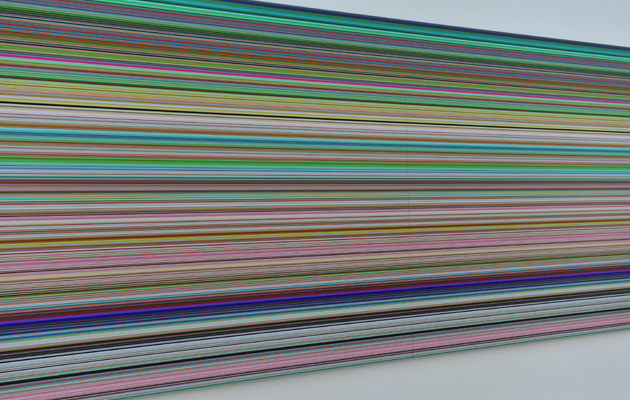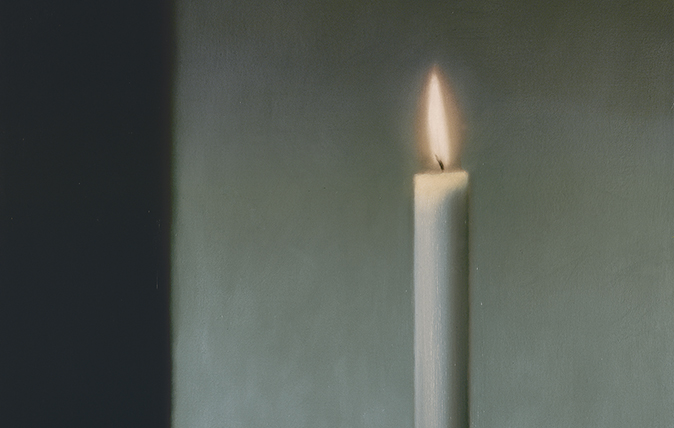In Focus: The tiny Rembrandt which soared from £650 to almost £15 million in the space of our expert's career
Huon Mallalieu reports back from a novel Sotheby's online sale where he runs in to an old friend up for sale last seen near the start of his career in the business.


Recently, I found myself doing something I don’t believe I have ever done before — I watched a reality programme. It was not made for television, nor was anyone naked as far as I could see, although some people might have been below the waist, in the manner of Zoom conferers.
Nobody burst into tears and there seemed to be no catty banter but, as so many participants spoke with one hand in front of their mouths, it was hard to be sure. This was the first episode of — or perhaps pilot for — International Art Sell-Off!
Well, it could have been. This was in fact an ambitious production for the Sotheby’s website, the July 28 auction titled ‘Rembrandt to Richter’, a ‘Live-Streamed Cross-Category Evening Sale’. In London, New York and Hong Kong, saleroom stands had been erected, resembling socially distanced jury boxes.
"Any pauses were covered by introducing the various Alexes to us, rather as if they were Paul Daniels’s lovely assistants"
On them stood numerous departmental heads and specialists, many of whom appeared to be called Alex, each armed with a retro hand-held telephone receiver connected to those who had com-missioned bids from 47 countries on six continents. More efficiently than mobiles, these allowed them to shield negotiations with their clients from competing colleagues and to wave bids. There was also a room in which a few people — presumably real bidders, although we saw little of them — sat at separate small tables, where they were supplied with bottled water.
Atop his Bond Street rostrum the auctioneer, Oliver Barker, co-ordinated proceedings with admirable grace and a favourite stance that was reminiscent of Usain ‘Lightning’ Bolt. He was able to conduct the bidding via three or four screens, as well as to the actual room, without apparent technological troubles. Any pauses, due either to indecisive bidders or perhaps time differences, he covered by introducing the various Alexes to us, rather as if they were Paul Daniels’s lovely assistants.
As the title promised, the 71 lots were a mixture of Old Master and modern works drawn from around the world, for the most part of the highest quality available to the market, although there were one or two slight embarrassments in such company.
Luckily, the Rembrandt and the principal Gerhard Richter did very well. The Rembrandt was the lovely little —8¾in by 6½in — self-portrait in ruff and black hat of 1632, painted when he was 26 and launching himself into the career of a fashionable Amsterdam portraitist. It was an advertisement and the smart clothes proclaimed him the equal of the clients he intended to attract.
Exquisite houses, the beauty of Nature, and how to get the most from your life, straight to your inbox.
I remember it on its previous visit to Sotheby’s in 1970, when it made £650, at a guess perhaps £15,000 today. This time around, it topped the sale at £14,549,400.
Drawing on a 1986 interview with Gerhard Richter, Benjamin H. D. Buchloh concluded: ‘Ever changing, fluid and ephemeral, clouds are to Richter Nature’s own form of abstract painting.’

Richter (b. 1932) is perhaps the most enjoyed contemporary German painter because his beautiful and poetic land and skyscapes stand proudly in the historical traditions of Friedrich, Constable and Turner. They do not challenge and confront, as so many curators would like, but, rather, they draw on the past and renew it.
His Wolken (Fenster) Clouds (Window), four canvases as one with an overall measurement of 157¾in by 78¾in, was painted in 1970 and the four panels themselves represent the window.
It was last on the London market at Christie’s in 2014. It sold then for £6,242,500 and now it reached £10,449,000.

Exhibition review: Gerhard Richter at Marian Goodman Gallery
This much anticipated exhibition, which launches New York dealer Marian Goodman’s Victorian warehouse gallery, surpasses expectation.

Credit: Gerhard Richter
My favourite painting: Cath Kidston
'In my dreams I would love an empty white room with just this in and a comfortable floor cushion for
After four years at Christie’s cataloguing watercolours, historian Huon Mallalieu became a freelance writer specialising in art and antiques, and for a time the property market. He has been a ‘regular casual’ with The Times since 1976, art market writer for Country Life since 1990, and writes on exhibitions in The Oldie. His Biographical Dictionary of British Watercolour Artists (1976) went through several editions. Other books include Understanding Watercolours (1985), the best-selling Antiques Roadshow A-Z of Antiques Hunting (1996), and 1066 and Rather More (2009), recounting his 12-day walk from York to Battle in the steps of King Harold’s army. His In the Ear of the Beholder will be published by Thomas Del Mar in 2025. Other interests include Shakespeare and cartoons.
